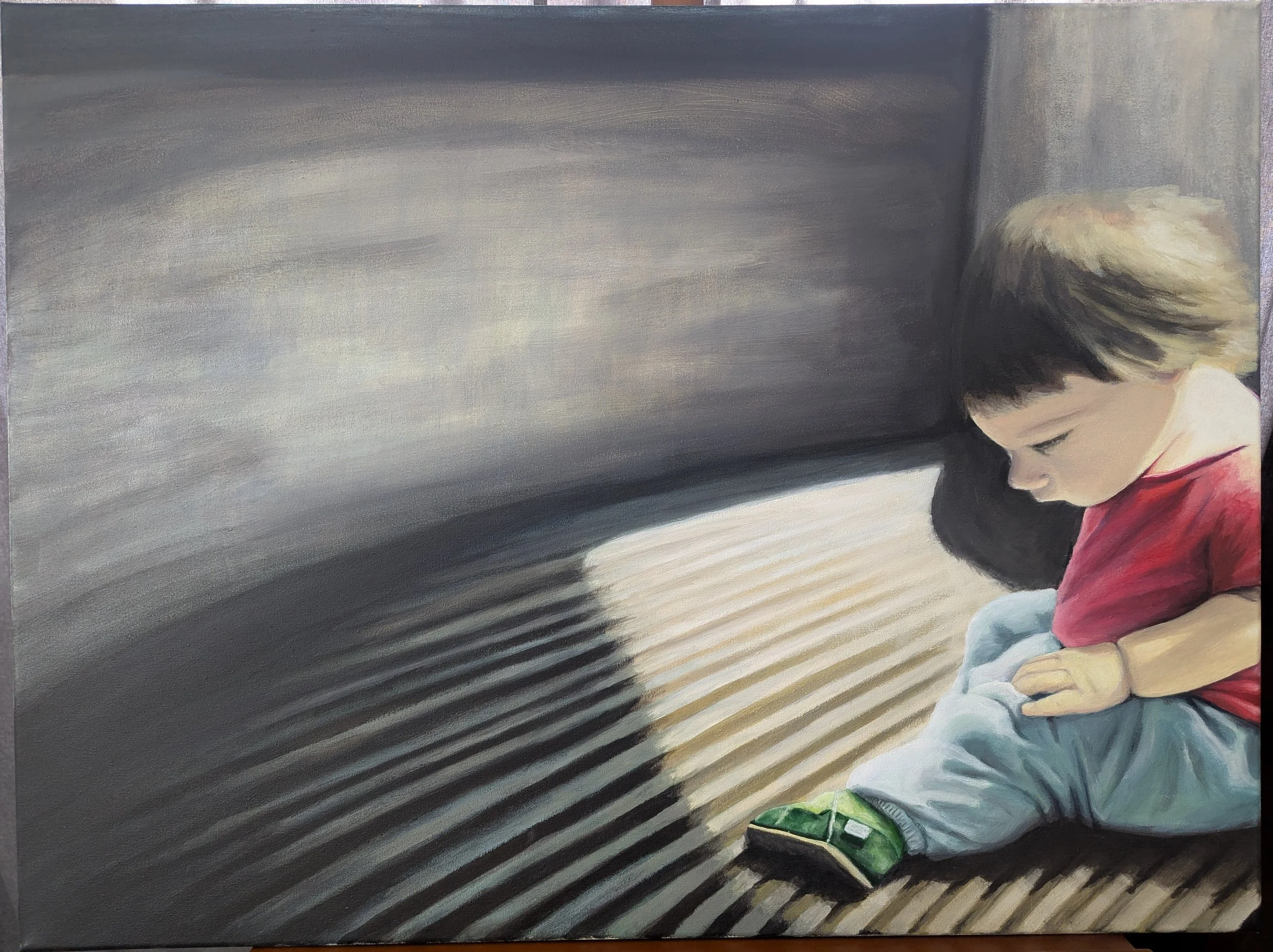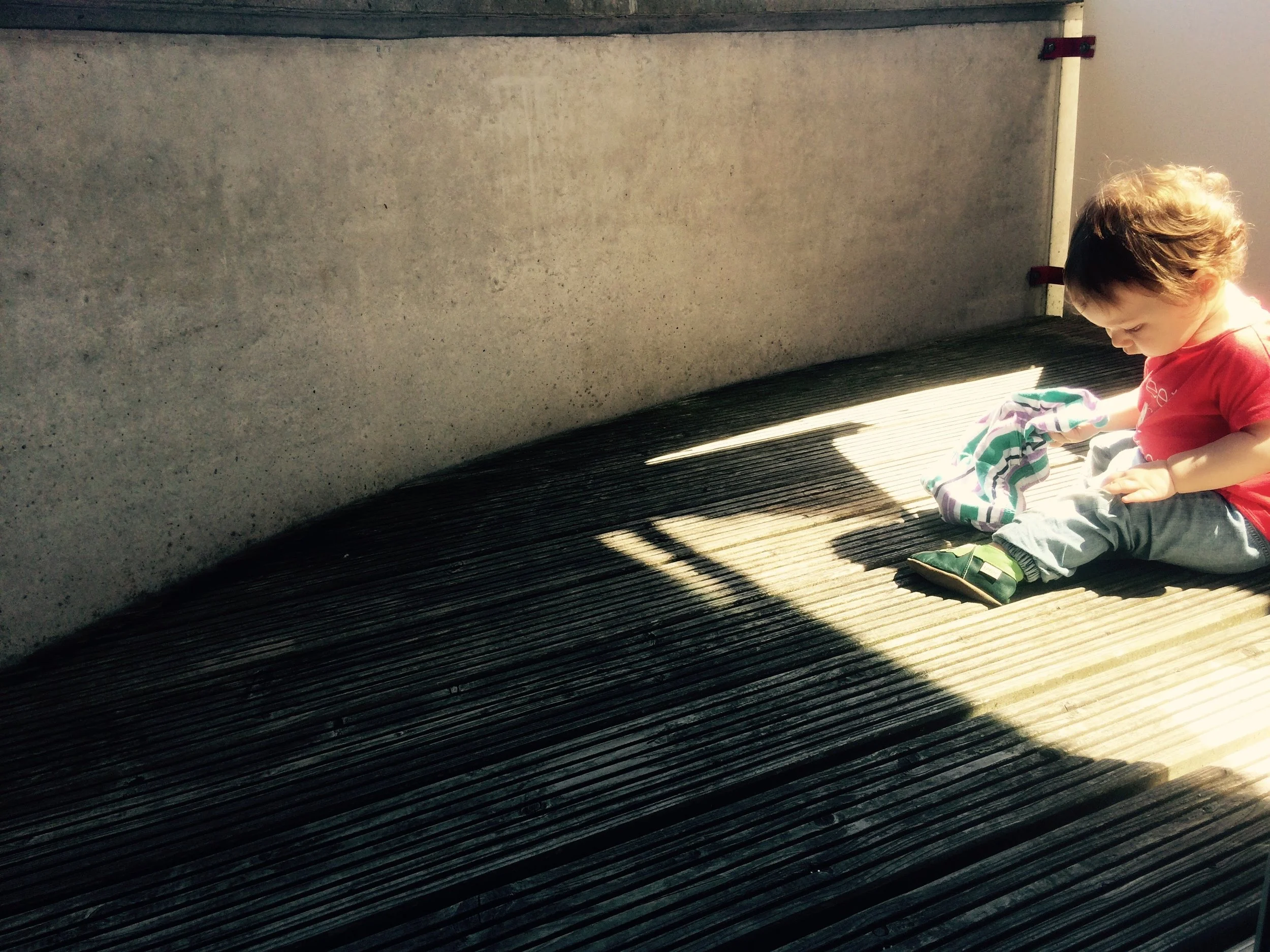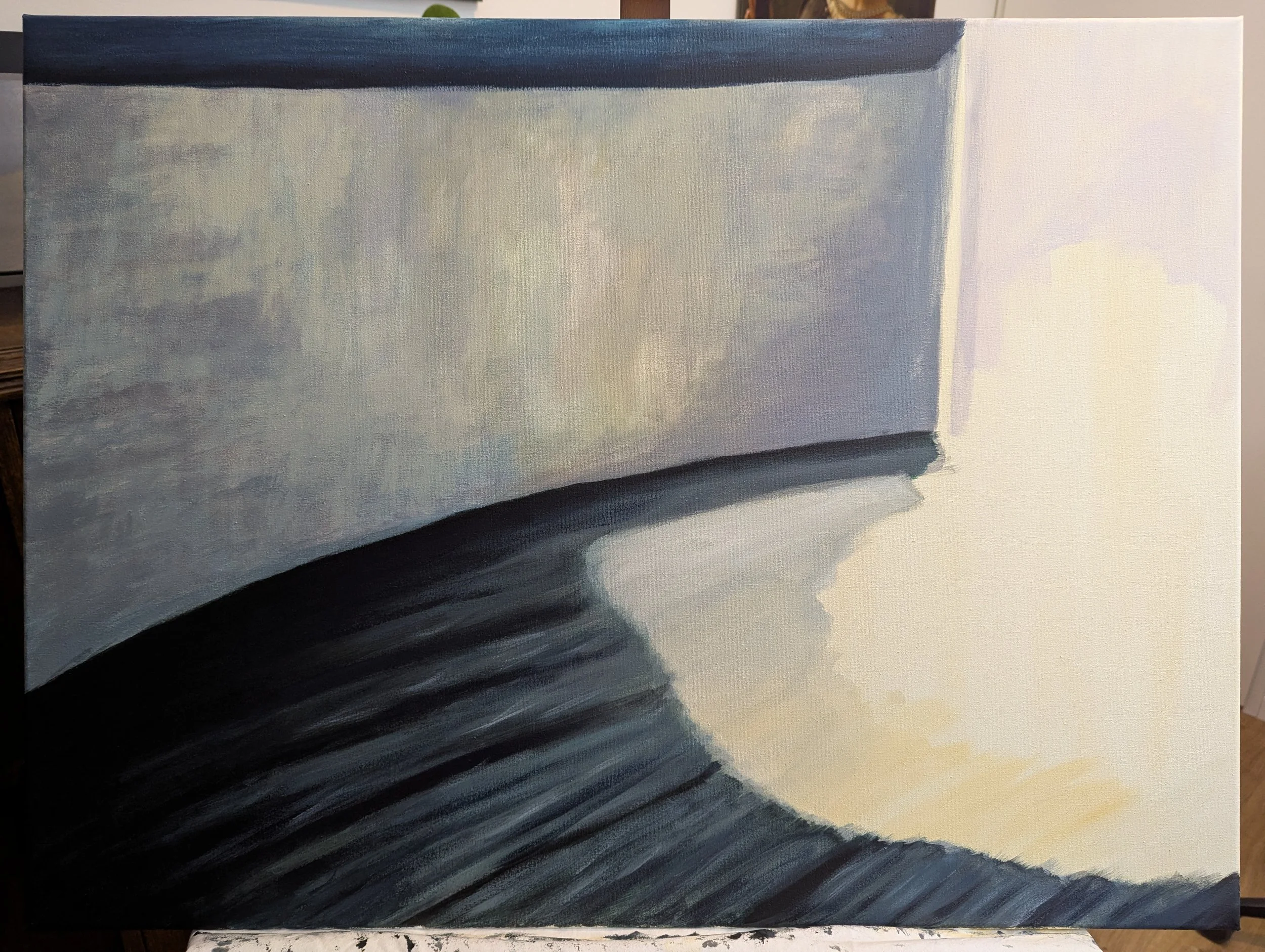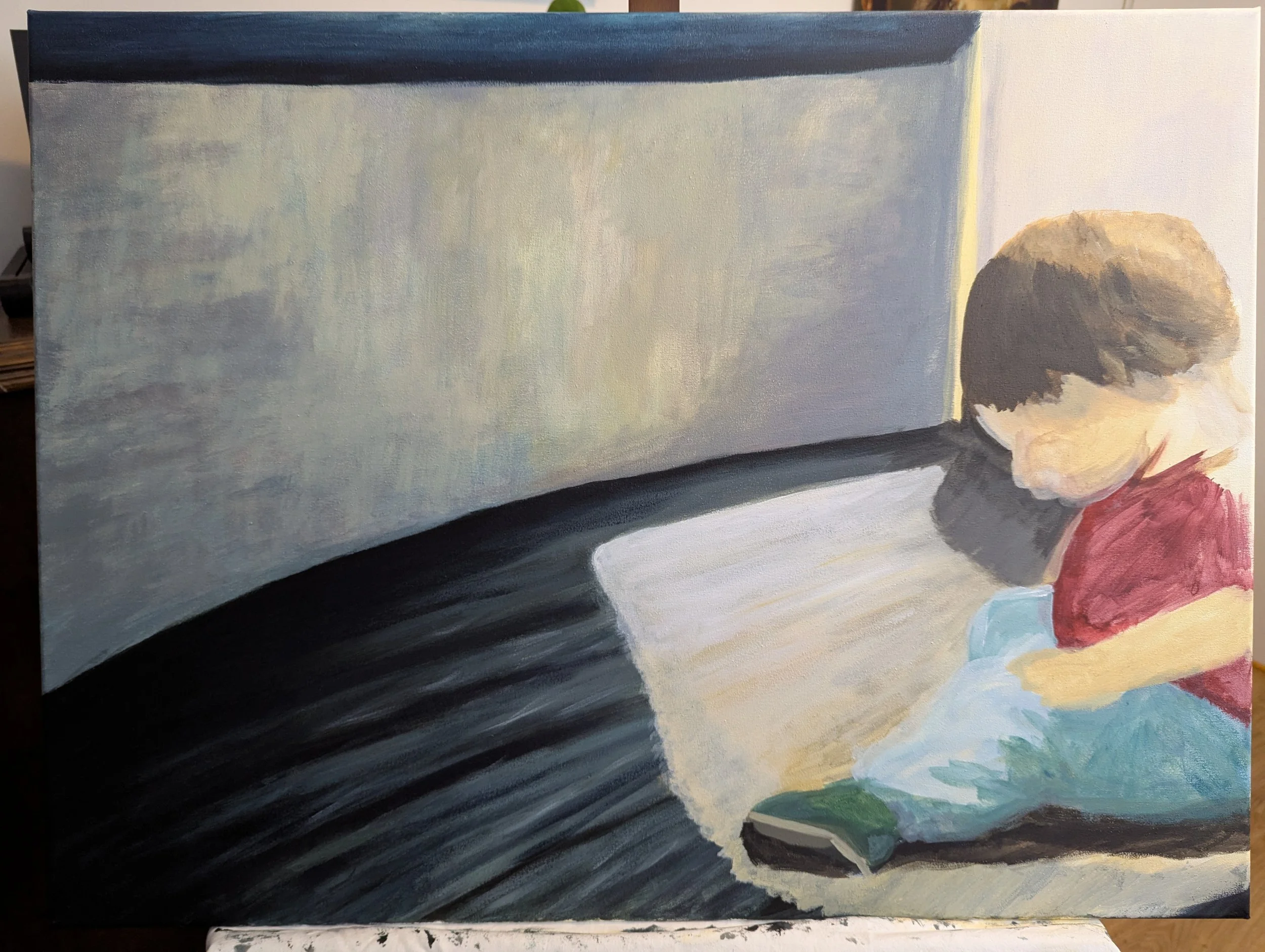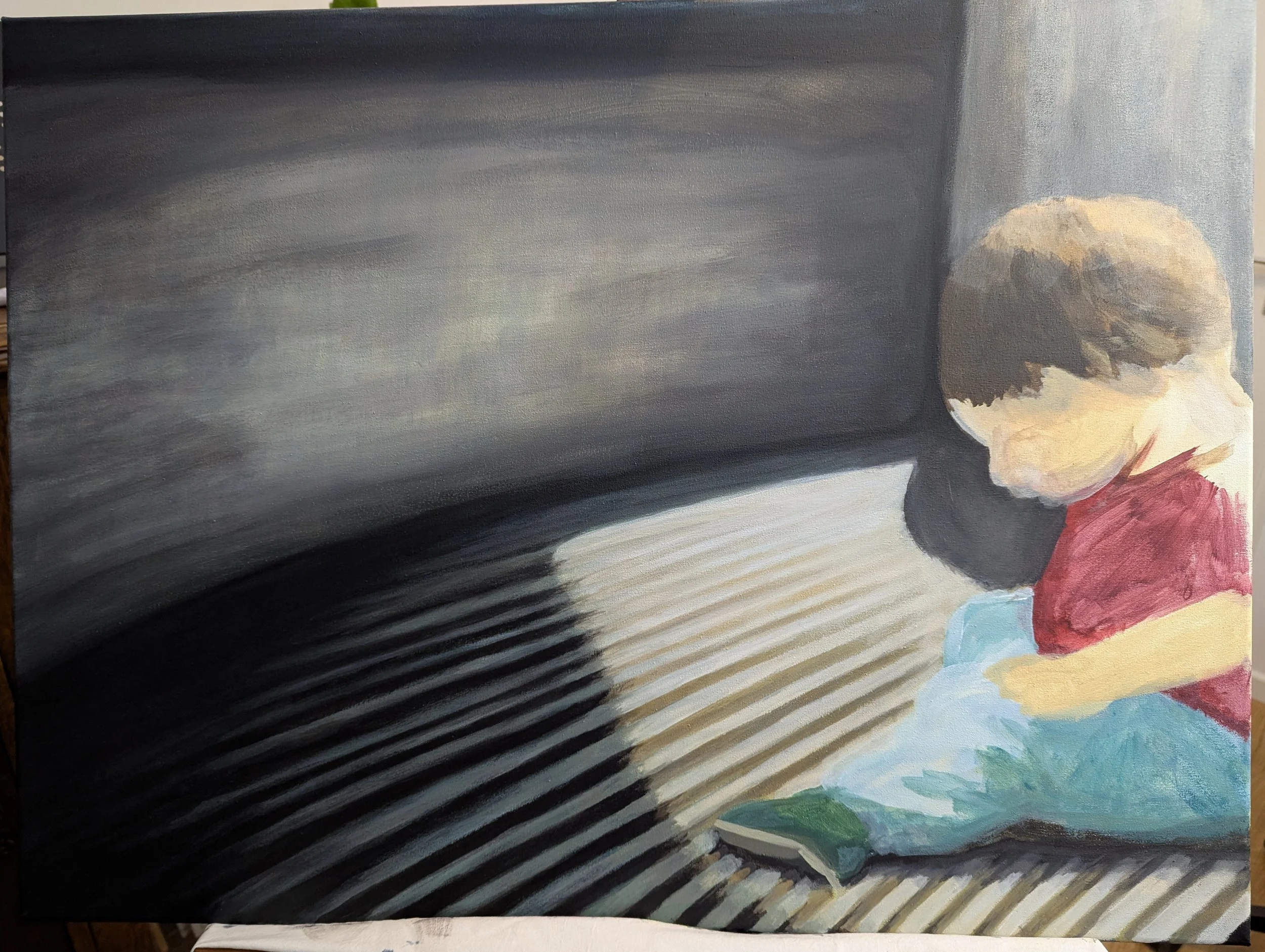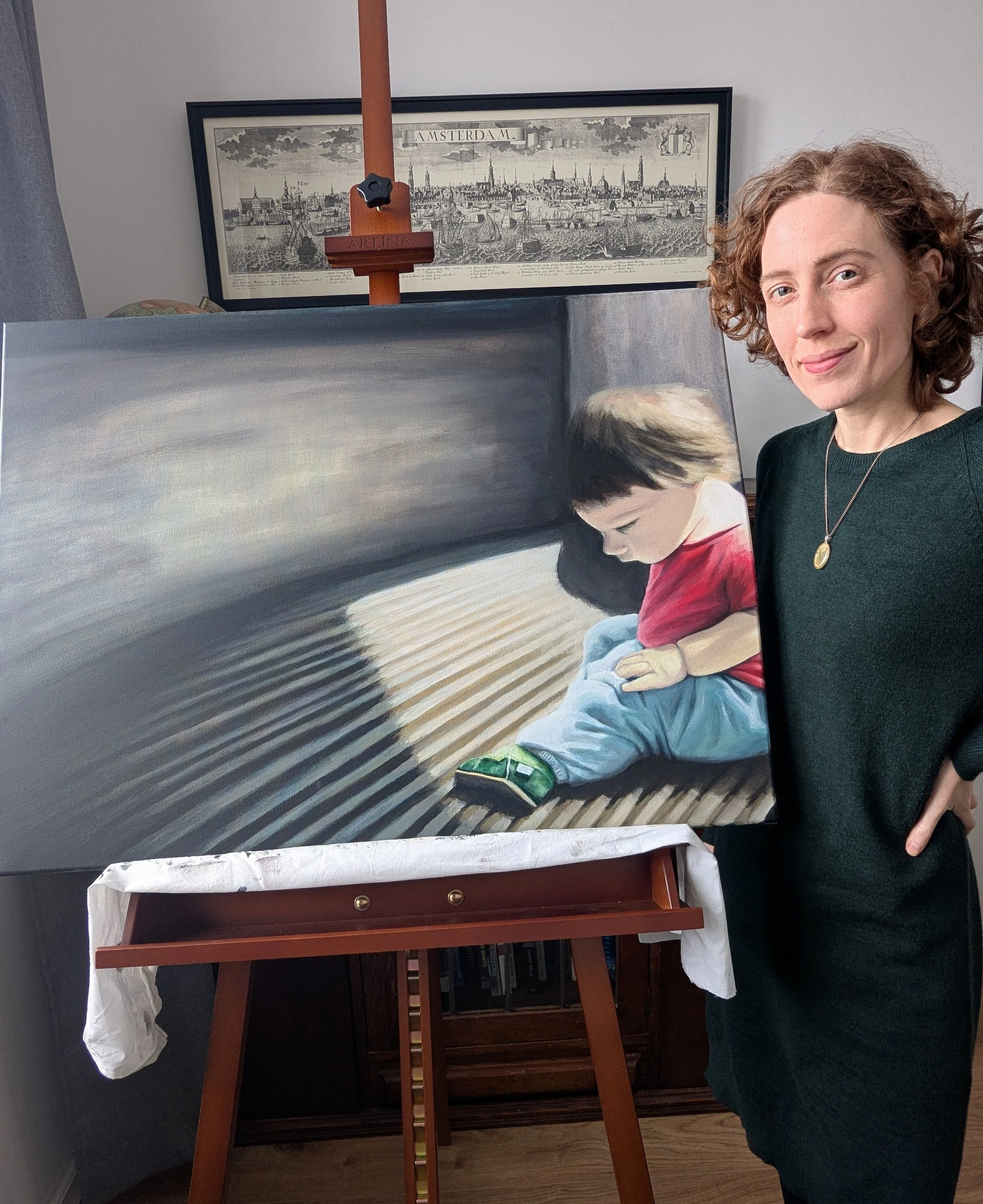“Balcony Sunbeam” - Acrylic Painting of Toddler and Sunshine
"Balcony Sunbeam” (acrylic on canvas, 60 × 80 cm)
“Balcony Sunbeam” is my second painting in a series called Fear/Love about conflicting emotions, darkness and light. It was inspired by the little balcony we had when my daughter was a toddler. It was simple, even ugly - a cement wall and wooden slats overlooking a busy road, sidewalk, and parking lot for a retirement home.
My daughter loved it. To make it more comfortable for her, we covered the wooden slats with green outdoor carpet. With a few toys and a flower box, it became cozy like an additional room.
But unlike the other rooms, I could never leave her alone on the balcony for long. She liked peering over the edge, and I was afraid she'd find a way to climb over the wall and tumble down if I didn't keep an eye on her.
So I sat inside and watched her play, or joined her in the sunbeam. We ate popsicles, blew bubbles, and watched people together. I propped her up sometimes to give her a better view, clutching her close to me. The balcony became a central point for so many happy memories. It might've been the most beloved spot in our home.
But it was also the most dangerous. A place of joy or fear, depending on your perspective.
Reference photo for “Balcony Sunbeam”
The Process
In this painting, I wanted to capture the mix of feelings that balcony evoked: peace and anxiety as well as beauty and ugliness. When I began it, I thought the trickiest part would be infusing the balcony with beauty while still keeping a subtle atmosphere of fear. (That ended up being the easiest thing, but anyway, that's what intimidated me at first.)
I tried to strike that balance by starting with the cement wall, using soft yellow as a background for cold colors like purple and mint green with rough brush strokes.
To offset the bright glow of the sunbeam on the wooden slats, I made the shadows darker and gloomier with shades of blue, black, and a touch of green. I wanted the shadows to stretch towards the light like a claw, only subtle - an undertone, not obviously menacing.
I had planned to paint the toddler next, but I was falling sick and only sketched the form. I was also frustrated with the painting. Something felt off. If I were using cheap paper, I might've tossed the painting at this point, but since I was using a nice, large canvas, I just took a break.
Later, I figured the problem was the overabundance of light, especially the strip of light alongside the toddler. I was following my reference photo too closely for the atmosphere I wanted to create. The painting needed greater contrast.
Satisfied with the background, I started working on the toddler, taking my time. Though I often feel slow while painting, I've found that I learn a lot when I slow down and experiment. Maybe I'll get faster over time, but at this point, I haven't prioritized speed yet. Just freedom to obsess over little details.
That being said, painting the arm and hand was both slow and miserable. I redid it over and over, but it still didn't look right, so I cursed the painting (and myself for choosing it) and took another break. I didn't take a photo of that session because I felt little progress had been made. Also, I was resentful and didn't want to look at the painting anymore.
The next day, I went back to the painting feeling anxious, fearing a repetition of the previous day. But at least I had pinpointed some problems. First, the shadow across the arm, though quite dark in the reference photo, was distracting when painted that dark. The high contrast drew too much attention to the arm.
The crease between the arm and hand was distracting, too. Fat folds on babies look a bit strange anyway, and I'd been painting them pretty dark. I needed to soften them so they wouldn't draw attention.
I also zoomed in on the fingers digitally to better understand what I'd been getting wrong. Turns out I'd overlooked how the fabric was partially covering the fingers. (‘YES!’ I thought. “I can hide them!!”)
I finally managed to pull it off, though the hand and arm are still not my favorite parts of the painting. Maybe I've looked at them too closely for too long, or maybe they're still not exactly right. In any case, I was happy to move on to the shadow and shoe, which I did enjoy doing.
That shoe was especially fun, partly from relief (discovering I can actually paint something right after suffering with the hand) and partly because it added a note of beauty I hadn't expected. It was an afterthought, something done quickly to finish the painting, but now it feels like one of the main subjects, drawing the eye.
Perhaps I should paint fewer hands and more shoes. But knowing myself, I'll probably keep painting hands until they feel like an afterthought, as easy as painting shoes.
